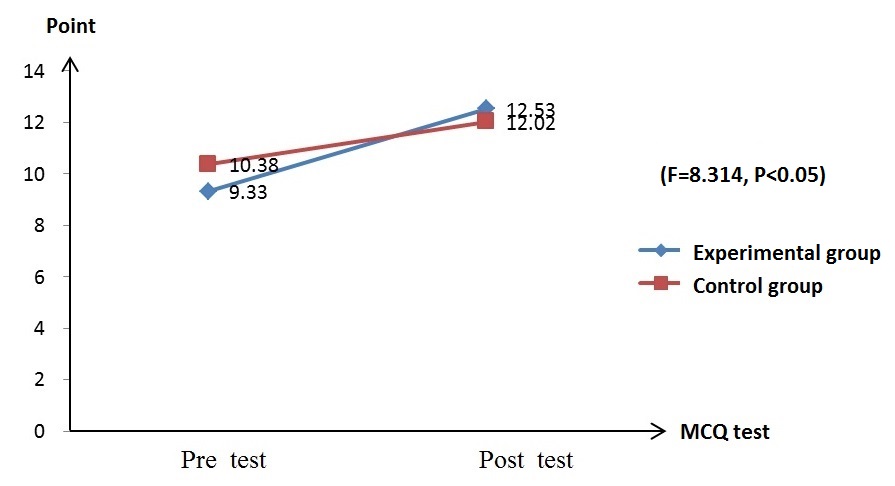


Theme
7II Simulation and Simulated Patients
INSTITUTION
NCKU Hospital - Pediatrics
NCKU Hospital - Obstetrics Gynecology
NCKU Hospital - Pediatrics
Duration of clinical rotation for medical students usually is designed by weeks which limited their chances of learning continuity care. Prenatal care starts from conception to delivery and students may not be able to follow through the course of pregnancy.
With web-based curriculum, we can provide an accessible and non-threatening learning environment. In addition, using virtual cases, students could experience longitudinal care of pregnant women. We have designed a simulated prenatal care system and invited students to take care virtual pregnant women according to the official Maternal Care Booklet during the rotation in Ob & Gyn.
This study was conducted in 2013-2014. We used quasi-experiment research method and enrolled 5th year medical students rotated to Department of Ob & Gyn of a university hospital; 45 students in the experimental group who were supplemented with this program and 48 students were in the control group who only took traditional course. We designed time table as 1 day equivalent to 1 week of gestation and each student of the experiment group was instructed to take care one virtual pregnant woman and followed up to 40 week or delivery in the 6-week rotation. Each time, students locked in the website, then followed the progress of pregnancy up to delivery. They prescribed the necessary exam or lab screening during pregnancy and made clinical decision by the guidelines in the booklet. A 15-item MCQ pre- and post-test were conducted at the beginning and end of rotation in both groups. We compared the student’s test scores between the groups and collected opinions from the students of experimental group by a questionnaire.
1.Knowledge Scores
All data were analyzed by using IBM SPSS version 22.0 software. Analysis of covariance (ANCOVA) was used to compare knowledge scores of two groups. Data revealed that the experimental group scored significantly higher than the control group (F=8.314,p<0.05)(Fig. 1).
Figure 1 Pre- and post-test between two groups

We further divided the students into four categories by the quartile of student’s scores in pre-test and compared their performance in the pre- and post-test. In the experiment group, students of 4 quartiles show improvement in test scores of post-test and those in the 4th quartile advanced greatest. (Fig. 2).
Figure 2 Four-quartile scores of pre- and post-test in experimental group

Except for the students of the 1st quartile, the 2nd-4th quartile show improvement in post-test in the control group, indicating effects of traditional clerkship rotation.(Fig. 3)
Figure 3 Four-quartile scores of pre- and post-test in control group

Pearson correlation coefficient revealed that there was no correlation between system login frequency and post-test scores in students (correlation coefficient: 0.066, p>0.05).
2.Responses of students
Figure 4 shows a diverging stacked bar chart of user’s response. The percentages of respondents who neither agreed nor disagreed and agreed with the statement are shown to the right of the zero line; the percentages of respondents who disagreed are shown to the left. Most of the students agreed that this system is useful and can enhance self-learning.
Figure 4 Diverging stacked bar chart of user’s response

A simulated prenatal care system enhances students’ learning during clerkship in Ob &Gyn. However, its effects on students’ clinical competency warrants further study.
Atack L, Rankin JA, Then KL (2005). Effectiveness of a 6-week online course in the Canadian Triage and Acuity Scale for emergency nurses. Journal of Emergency Nursing, 31(5), 436-441.
Health Promotion Administration, Ministry of Health and Welfare, Executive Yuan Taiwan (2012). Maternal Health Booklet (8th ed.). Taiwan: Author.
Naomi B. Robbins and Richard M. Heiberger (2011). Plotting Likert and Other Rating Scales. JSM Proceedings, Section on Survey Research Methods (p1058-1066). Alexandria, VA: American Statistical Association.
Oye, N. D., A. Iahad, N., Madar, M. J. & Ab.Rahim, N (2012). The impact of e-learning on students’ performance in tertiary institutions. International Journal of Computer Networks and Wireless Communications,2(2), 121-130.
Solaimalai Rajaram, (2011), Effective use of Web-based Resources for Enhancing ESL Learning Environment. Greener Journal of Educational Research, 1(1), 15-18.
 Send Email
Send Email